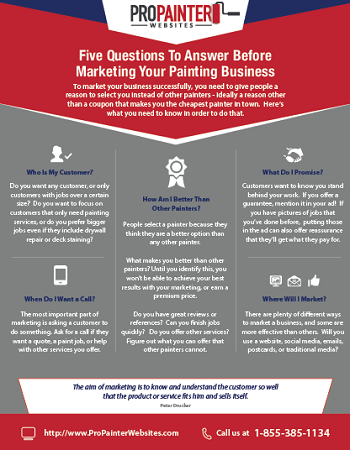Understand How Seasonal Problems Impact The Success Of Commercial Outside Paint And Find Out The Optimal Durations To Guarantee Long-Lasting End Results For Your Job
Understand How Seasonal Problems Impact The Success Of Commercial Outside Paint And Find Out The Optimal Durations To Guarantee Long-Lasting End Results For Your Job
Blog Article
Developed By- mouse click the next article
When you're planning a commercial exterior painting task, seasonal elements can make or damage your outcomes. You'll want to consider just how temperature level and moisture impact paint application and drying times. Selecting the right period can ensure your paint sticks correctly and lasts longer. Yet which periods are absolutely the very best for this sort of work? Let's explore the crucial elements that can impact your task's success.
The Influence of Temperature on Paint Application
When you're preparing a business exterior painting project, the temperature can substantially influence how well the paint sticks and dries.
Ideally, you wish to repaint when temperature levels range between 50 ° F and 85 ° F. If it's also chilly, the paint may not cure appropriately, resulting in concerns like peeling or breaking.
On the other hand, if it's too hot, the paint can dry out also quickly, avoiding appropriate adhesion and causing an irregular coating.
You must additionally consider the time of day; early morning or late afternoon supplies cooler temperatures, which can be more favorable.
Always examine the supplier's referrals for the details paint you're making use of, as they commonly give assistance on the perfect temperature variety for optimum outcomes.
Humidity and Its Impact on Drying Times
Temperature isn't the only environmental variable that affects your industrial external paint project; humidity plays a substantial function also. thumbtack painters can reduce drying out times drastically, impacting the general quality of your paint work.
When the air is filled with moisture, the paint takes longer to treat, which can lead to concerns like bad adhesion and a greater risk of mildew growth. If you're painting on a specifically humid day, be prepared for prolonged delay times in between layers.
It's vital to check regional weather conditions and strategy accordingly. Ideally, go for humidity degrees between 40% and 70% for ideal drying out.
Maintaining these consider mind guarantees your task remains on track and delivers a long lasting finish.
Best Seasons for Commercial Outside Paint Projects
What's the very best season for your commercial exterior paint projects?
Springtime and early fall are typically your best choices. During these periods, temperatures are mild, and humidity levels are usually reduced, producing suitable conditions for paint application and drying.
Stay clear of summertime's intense heat, which can create paint to completely dry as well promptly, bring about inadequate adhesion and finish. Similarly, wintertime's cool temperatures can prevent appropriate drying and treating, taking the chance of the longevity of your paint work.
Go for days with temperatures in between 50 ° F and 85 ° F for optimal outcomes. Remember to check the regional weather report for rain, as wet problems can destroy your job.
Preparation around these factors ensures your paint project runs smoothly and lasts much longer.
Conclusion
In conclusion, preparing your business exterior painting tasks around seasonal considerations can make a considerable distinction in the outcome. By organizing work throughout the ideal temperatures and humidity degrees, you'll ensure much better bond and drying out times. Bear in mind to keep an eye on neighborhood weather forecasts and pick the right time of year-- spring and very early autumn are your best choices. Taking these steps will assist you accomplish a resilient and professional finish that lasts.
